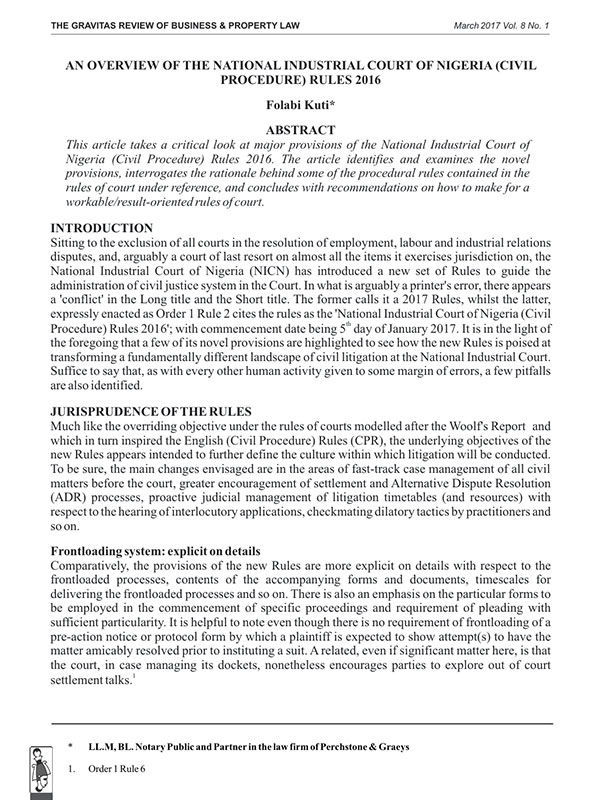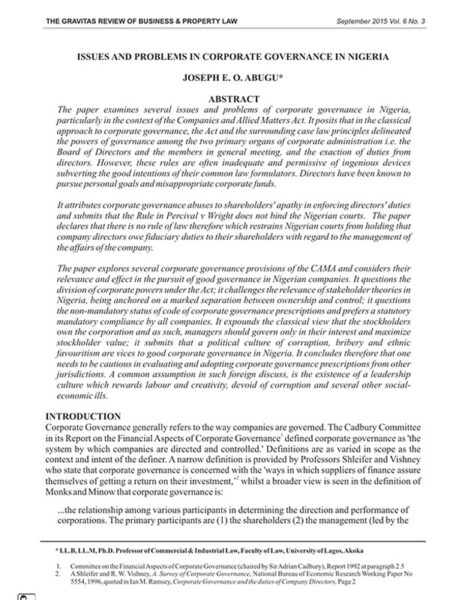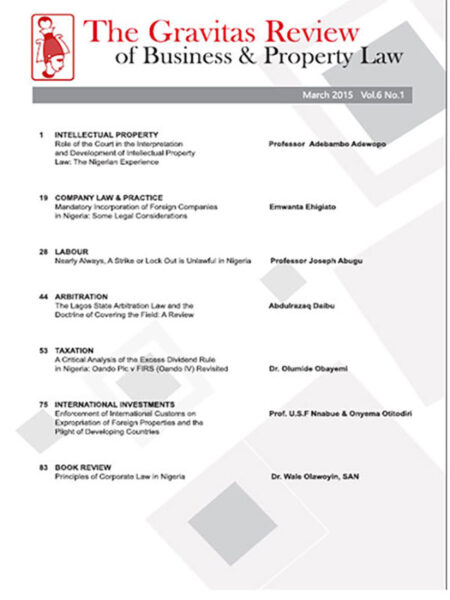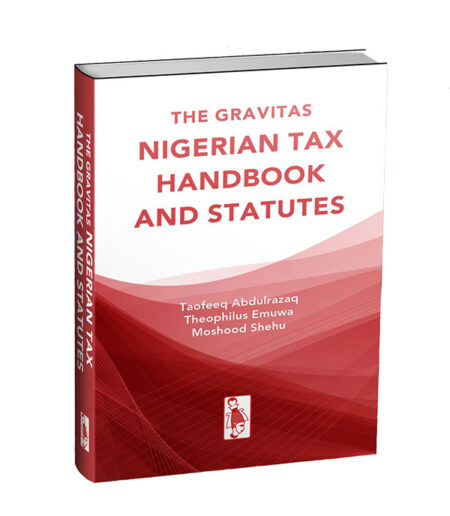Description
ABSTRACT
An Overview of the Nigerian Industrial Court (Civil Procedure) Rules 2016
Folabi Kuti*
This article takes a critical look at major provisions of the National Industrial Court of Nigeria (Civil Procedure) Rules 2016. The article identifies and examines the novel provisions, interrogates the rationale behind some of the procedural rules contained in the rules of court under reference, and concludes with recommendations on how to make for a workable/result-oriented rules of court.
INTRODUCTION
Sitting to the exclusion of all courts in the resolution of employment, labour and industrial relations disputes, and, arguably a court of last resort on almost all the items it exercises jurisdiction on, the National Industrial Court of Nigeria (NICN) has introduced a new set of Rules to guide the administration of civil justice system in the Court. In what is arguably a printer’s error, there appears a ‘conflict’ in the Long title and the Short title. The former calls it a 2017 Rules, whilst the latter, expressly enacted as Order 1 Rule 2 cites the rules as the ‘National Industrial Court of Nigeria (Civil Procedure) Rules 2016’; with commencement date being 5th day of January 2017. It is in the light of the foregoing that a few of its novel provisions are highlighted to see how the new Rules is poised at transforming a fundamentally different landscape of civil litigation at the National Industrial Court. Suffice to say that, as with every other human activity given to some margin of errors, a few pitfalls are also identified.
JURISPRUDENCE OF THE RULES
Much like the overriding objective under the rules of courts modelled after the Woolf’s Report and which in turn inspired the English (Civil Procedure) Rules (CPR), the underlying objectives of the new Rules appears intended to further define the culture within which litigation will be conducted. To be sure, the main changes envisaged are in the areas of fast-track case management of all civil matters before the court, greater encouragement of settlement and Alternative Dispute Resolution (ADR) processes, proactive judicial management of litigation timetables (and resources) with respect to the hearing of interlocutory applications, checkmating dilatory tactics by practitioners and so on.
Frontloading system: explicit on details
Comparatively, the provisions of the new Rules are more explicit on details with respect to the frontloaded processes, contents of the accompanying forms and documents, timescales for delivering the frontloaded processes and so on. There is also an emphasis on the particular forms to be employed in the commencement of specific proceedings and requirement of pleading with sufficient particularity. It is helpful to note even though there is no requirement of frontloading of a pre-action notice or protocol form by which a plaintiff is expected to show attempt(s) to have the matter amicably resolved prior to instituting a suit. A related, even if significant matter here, is that the court, in case managing its dockets, nonetheless encourages parties to explore out of court settlement talks.1
* LL.M, BL. Notary Public and Partner in the law firm of Perchstone & Graeys
- Order 1 Rule 6








Reviews
There are no reviews yet.